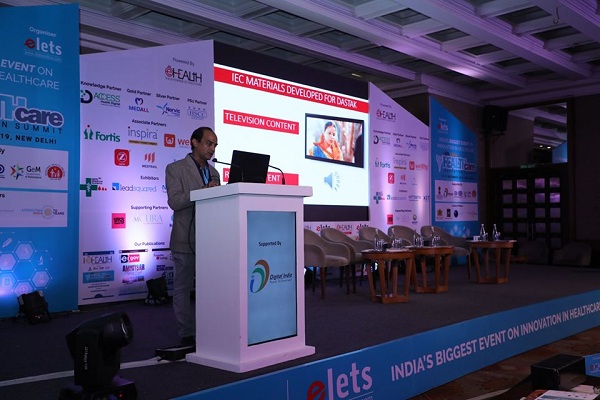Elets Conference: We activated state, district and block level inter-departmental committees and we strengthened our health facilities”:Dr Vikasendu Agrawal
It is not very often that Uttar Pradesh gets a chance to present something in front of the stars of the medical fraternity. So, Dr. Vikasendu Agarwal, Joint Directorate of Medical and Family Welfare, UP, grabbed this great opportunity of speaking about the healthcare highlights in Up at Annual Healthcare Innovation Summit, 2019, organized by Elets Technomedia.
I am going to present a landmark campaign of government which is called DASTAK campaign. Over past two years, we have made tremendous improvements in AES situation and success is primarily due to a campaign called DASTAK. So, historically we know that AES and Japanese encephalitis (JE) have been dynamic in many districts of eastern UP and 7 districts of Basti and Gorakhpur division where we are contributing to about 85% of total case load. There is no vaccine available for AES against any of the causative agent except JE and most of the affected children were in the age group of 1-15 years from lower socio -economic background. These are the areas which were badly affected in 7 districts of Basti and Gorakhpur division, high risk districts and we had over 670 most affected villages. Then, the development of DASTAK campaign, we formulated state specific guidelines for DASTAK where we demarcated interdepartmental activity. We activated state, district and block level interdepartmental committees and we strengthened our health facilities. We also developed trading materials and conducted trading for all stakeholders and then we rolled out the campaign. These were the issues that were identified. There was lack of coordination between different government departments. There was lack coordination amongst the government department, lack of safe drinking water, environmental cleanliness and knowledge about factors contributing to spread of the disease. Then there was ignorance about initial signs and symptoms of the disease which led to late reporting of cases in health facilities and initial treatment seeking was mostly at village level.


All these contributed to high AES case load, delay in taking the patient to the health facility, lack of training for health professionals and non availability of proper treatment, along with tendency to rush patients late to hospitals. All this contributed to high AES mortality. Concept was that we had to inform the public, strengthen our health facilities and then to inform the public that we have strengthened the health facilities and you can take patients to block level hospitals where you will get proper treatment for AES. We trained our Asha workers for this campaign and Asha workers went door-to-door to spread the message of availability of health facilities at nearby health centers. These were the key components which trained our medical officers, Asha workers about interdepartmental coordination by 12 government departments. Front line workers knocked at each door.
Now these are the activities by department of Family health and welfare. We developed state specific guidelines, then we were nodal department for inter departmental segments too. data compilation report was also with us and we did monitoring of the campaign. This is how we went about it.


post_id:
uld_count:
Cookie not set
Value 1: 0
Value 2: 10
















